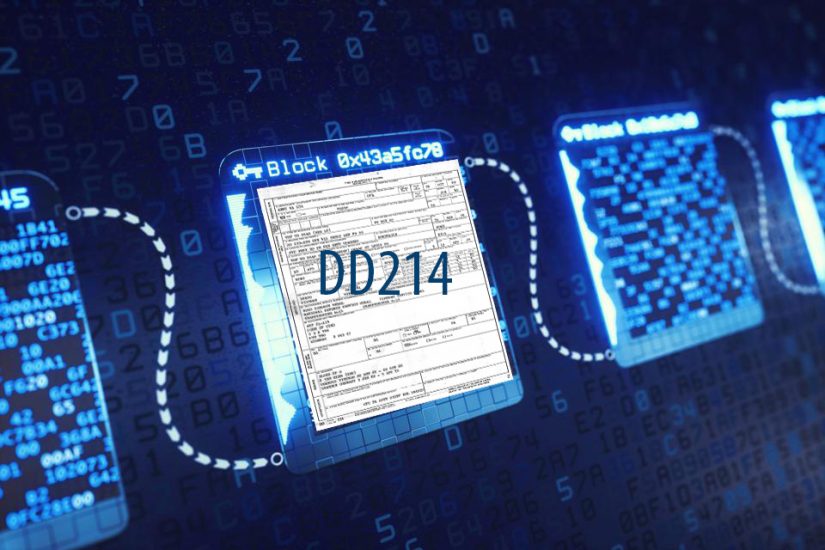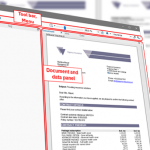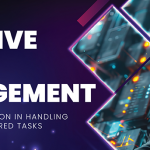Blockchain: DD 214 military service record
I’m always on the lookout for a good blockchain use case, and I may have found one when I recently spoke with the Chief of Resources and Contracts at the US Air Force. We discussed the issues of the DD Form 214 military service records, and we wondered if blockchain could:
- Improve the authenticity and integrity of the DD Form 214 and the method to validate.
- Reduce the Application for Correction of Military Records, which goes into the thousands a year.
- Share DD Form 214 data with other government agencies.
Let’s start, for those that do not know, with a brief explanation of DD Form 214. Continued to determine ways to reduce fraud or suspicion of fraud on the authenticity of the DD 214. Is blockchain is the right choice for authenticity and integrity? While documents can be proven to be authentic, a much bigger problem the Department of Defense has, is that every year, thousands of Applications for Correction of Military Records are filed. This has emotional and financial impact on veterans and relatives, as well financial and reputational impact for the department itself. This post continues exploring the option of storing data on the blockchain to reduce this problem and will conclude with some thoughts if data on the cloud would pave the way for sharing data with government agencies, which would allow them to improve automation of processes.
DD Form 214
The DD Form 214, Certificate of Release or Discharge from Active Duty, generally referred to as a “DD 214“, is a document of the United States Department of Defense, issued upon a military service member’s retirement, separation, or discharge from active duty in the Armed Forces of the United States (i.e. U.S. Army, U.S. Navy, U.S. Marine Corps, U.S. Air Force, U.S. Space Force, and the U.S. Coast Guard).
DD Form 214 is the capstone documentation of completed military service, representing the complete, verified record of a service member’s time in the military (Active, including Reservists on active assignments). Among the most important details is the character of service (Honorable, Dishonorable, General Under Honorable Conditions, etc.), which greatly affects veteran benefits and can have a long-term reputational impact.
Other important data include the service member’s awards and medals, the highest rank/rate and pay grade held on active duty, lengths of service (including total time, sea time, overseas service, and prior service periods), job specialty, and a record of training and schools completed. Job specialty documents primary and secondary qualifications.
The DD Form 214 is commonly used by various government agencies, chief among them the Department of Veterans Affairs, to evaluate eligibility for veteran benefits, and it may be requested by employers (to evaluate experience, skills, and character, as well as to verify eligibility for preferential hiring where applicable).
DD Form 214 is also generally required by funeral directors for immediate proof of eligibility for interment in a VA cemetery, to obtain a grave marker, or to provide military honors to a deceased veteran.
eBenefits, a web portal, provides Service members with free electronic copies (PDF). There is also the possibility to request a paper cost-free copy of the DD 214 replacing a lost and destroyed DD Form 214.
Source: Wikipedia
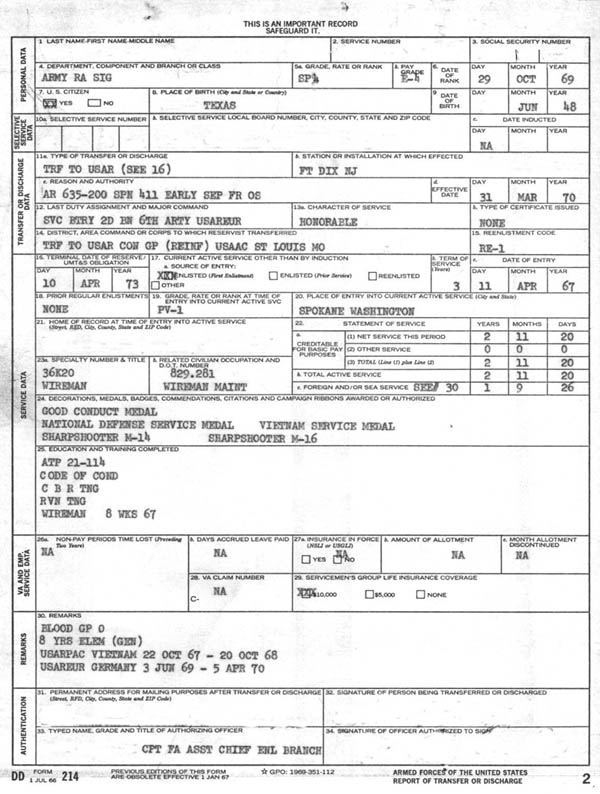
Blockchain, the Right Choice for Authenticity and Integrity of DD 214?
People have historically searched for ways to securely track and authenticate documents. Post stamps are viewed to be the forerunner and first utilization of timestamping, but in a very crude way. Already in the 17th century scientists attempted to patent or prove ownership over documents by sending letters to themselves which were written as an anagram, or by encrypting them (Isaac Newton in 1677) to not unveil details. With the arrival of computers, we had the chance to see one of the first real implementations of digital signing and digital timestamping.
Digitally Sign the Electronic (PDF) DD 214
To prove the authenticity and integrity of PDF documents, Papyrus Software uses a digital certificate from the issuing entity to apply digital signatures to the PDF.
1. Proof of verification or authority is the process involved in ensuring that a digital object is authentic of the content issued by the issuer.
2. The authenticity and integrity information is conveyed to the user when they open a PDF document in Adobe Acrobat or Reader and click on the visible authenticity seal. The user can verify that the document’s certification is valid, that it has not been altered since certification, and that the signer’s identity was valid at the time the file was digitally signed. The user also has the option of viewing the properties of the signature.
However, none of these methods provides sufficient security to ensure that the document has not been tampered with. Despite complex methods for encrypting time stamps, these systems inevitably lead to data manipulation. The only way to solve this problem is through decentralization, and blockchain networks are so far the only practical implementation of a decentralized timestamp.
E-Notary / Digital Timestamping using Blockchain
To verify the authenticity and creation of data, Blockchain uses timestamps using the hash-based proof of work mechanism. In this network, a Timestamp Server takes the hash of a block containing transactions to be timestamped and published on the blockchain network. By doing so, the server ensures that the transactions have existed at this point in time. This system is chronologically, as each transaction hash contains the timestamp of the previous block of transactions, forming a chain of blocks.
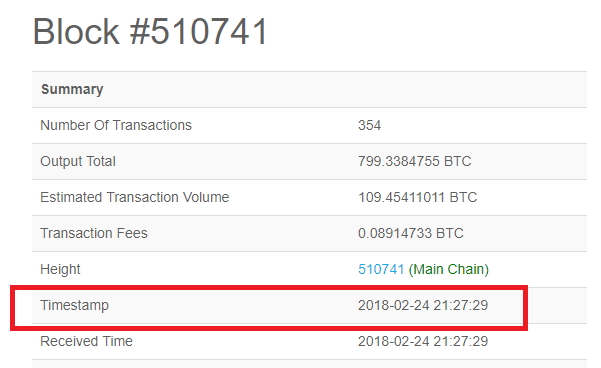
We can conclude that blockchain-based timestamping is a secure way of tracking the creation and modification time of a document. More so, it is secure enough that even the owner of a document does not have the power to change any data once a document has been recorded.
How does it work?
To create a tamper-proof timestamp of a digitally signed DD 214 PDF, Papyrus will
- Hash; the hash (SHA-256) is created from the digitally signed PDF. A hash is a concatenation of letters and numbers that uniquely identifies your asset – similar to a human fingerprint.
- Anchor; the hash is uploaded by Papyrus to the blockchain, where it cannot be changed or deleted afterwards. The time at which the block containing the asset’s hash is added to the blockchain is the tamper-proof timestamp.
- Verify; by comparing the hash of the DD 214 PDF at hand with the hash on the public blockchain, you can verify the timestamp at any time. If the hash is correct, you can prove that your document existed at the relevant time and has not been tampered with since.
Once your content is timestamped, you might want to let your visitors know, and optionally show them how they can verify the timestamp. This is where the timestamp certificate comes in. You can add a link or badge to the certificate where you think it fits best.
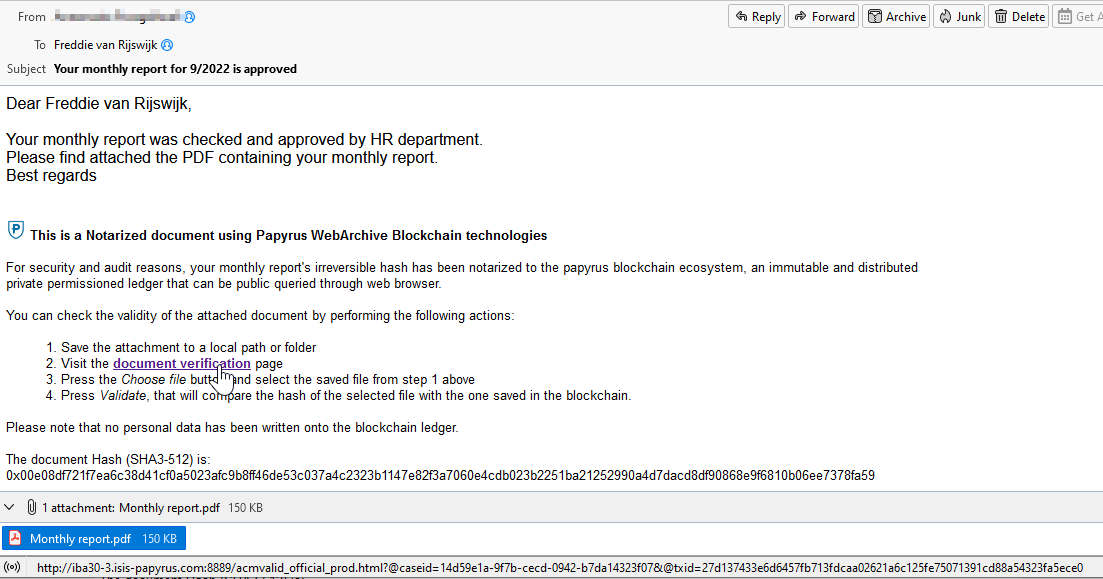
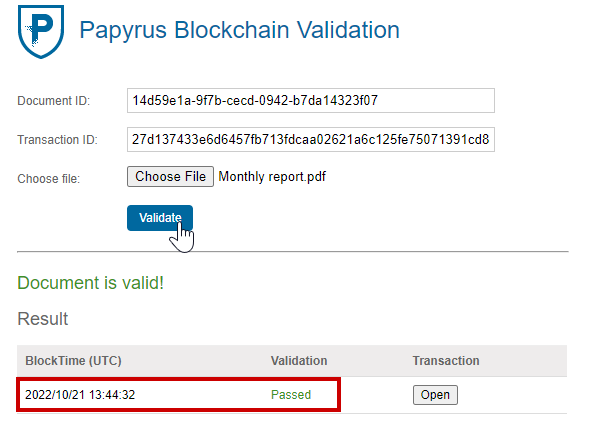
Papyrus provides an Application Programming Interface (API) that any website or mobile application can use to verify the uploaded DD 214 PDF authenticity and integrity.
Private or public blockchain?
As the United States Department of Defense is both the issuing and verification organization, it can choose for either a public or private blockchain implementation. Trust comes from the institute and not from the technology. With a private blockchain network, for example Hyperledger, it would be an option to store the PDF on the blockchain, to allow connected agencies, to visually comparing the printed DD 214 with the electronic PDF version. However, as the DD 214 contains Person Identifiable Information, it is highly recommended to use encryption of the PDF and provide only authorized users the ability to decrypt.
Blockchain to Reduce the Application for Correction of Military Records
The secretary of a military department, acting through a board for correction of military records, has authority to change any military record when necessary to correct an error or remove an injustice. A correction board may consider applications for correction of a military record, including a review of a discharge issued by courts-martial. Every year, thousands of disputes are handled by the board.
The veteran, survivor or legal representative generally must file a request for correction within three years after discovery of an alleged error or injustice. To justify any correction, it is necessary to show to the satisfaction of the board that the alleged entry or omission in the records was in error or unjust. Applications should include all available evidence, such as signed statements of witnesses or a brief of arguments supporting the requested correction. Application is made with DD Form 149.
The root cause, data quality
Mistakes are made when data is entered or mutated in the internal Oracle Database. Access permissions keep the data safe from unauthorized access from insiders and for sure is not viewable for outsiders. Outsiders such as the service member’s or their relatives will only be able to view and verify the data until the DD 412 Military Service Record is created and provided, which can be many years or decades after that event took place and was recorded in the database.
Add military event data on the blockchain
The key to data correctness is to provide the outsiders, in this case the service member, the possibility to validate the data that was added or mutated in the private database and when agreeing having it recorded in a transparent, verifiable and immutable way. Hence, to write the data (e.g. JSON, XML) on the public blockchain. As mistakes are the exception, then a simple and seamless procedure to apply for correction of mistakes in the recent added or mutated data must be implemented. The moment the data is corrected in the private database, a new updated version of the data will be added to the blockchain with a pointer to the previous one, which obvious still exist on the blockchain as well, acting as an audit trail with digital timestamp.
Remember, storing private or sensitive data, that could point-back to the service member, on a public blockchain is a no-go. End-to-end encryption of the data could address this.
Produce DD 214 from military data on the blockchain
When it’s time to produce the DD From 214 it must be done from the last added service data on the blockchain. The DD 214 ideally should have a reference to the timestamped data on the blockchain so that it can be verified against that data at any time. Which will further help to reduce the number of disputes in the future.
Blockchain to share DD 214 data with other government agencies
Having the military event data stored on the public blockchain, as described above, allows government agencies to automate their processes such as benefit calculations by having access to the data of service members on the blockchain. Each agency will have exactly the same data, as this is the essence of the distributed ledger / database of blockchain. This solves the master data problem that comes when data is shared and stored locally in private databases (data cloning).
Closing words
I truly hope that this post in conjuction with the debunking 9 blockchain myths post, will help you to identify the pro’s and con’s of blockchain applications and spark some new ideas for your organization. I am really interested to learn and hear from you, so feel free to contact me or email Papyrus Software for more information.

Senior Executive at Papyrus Software

